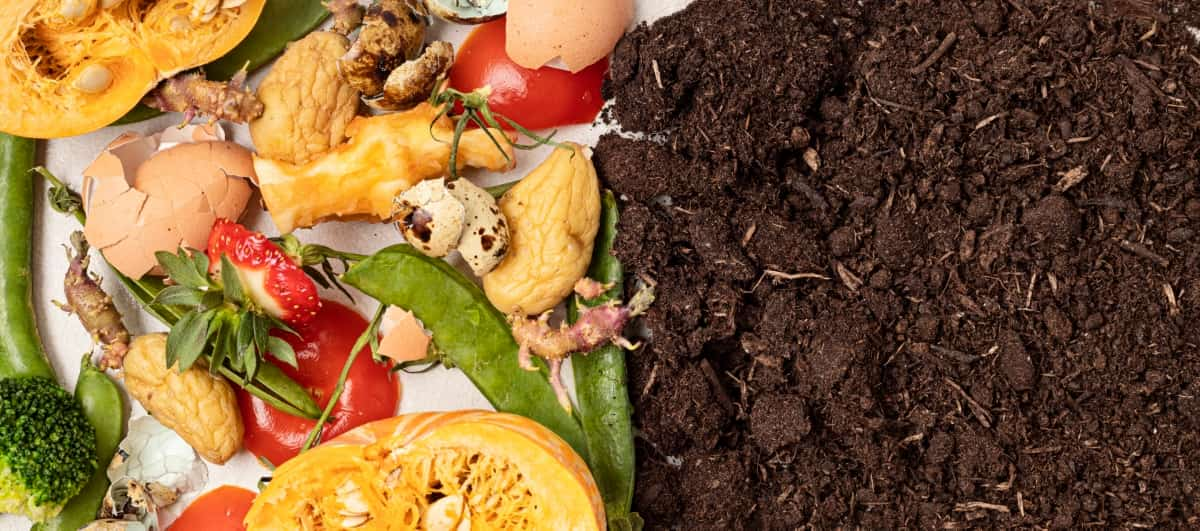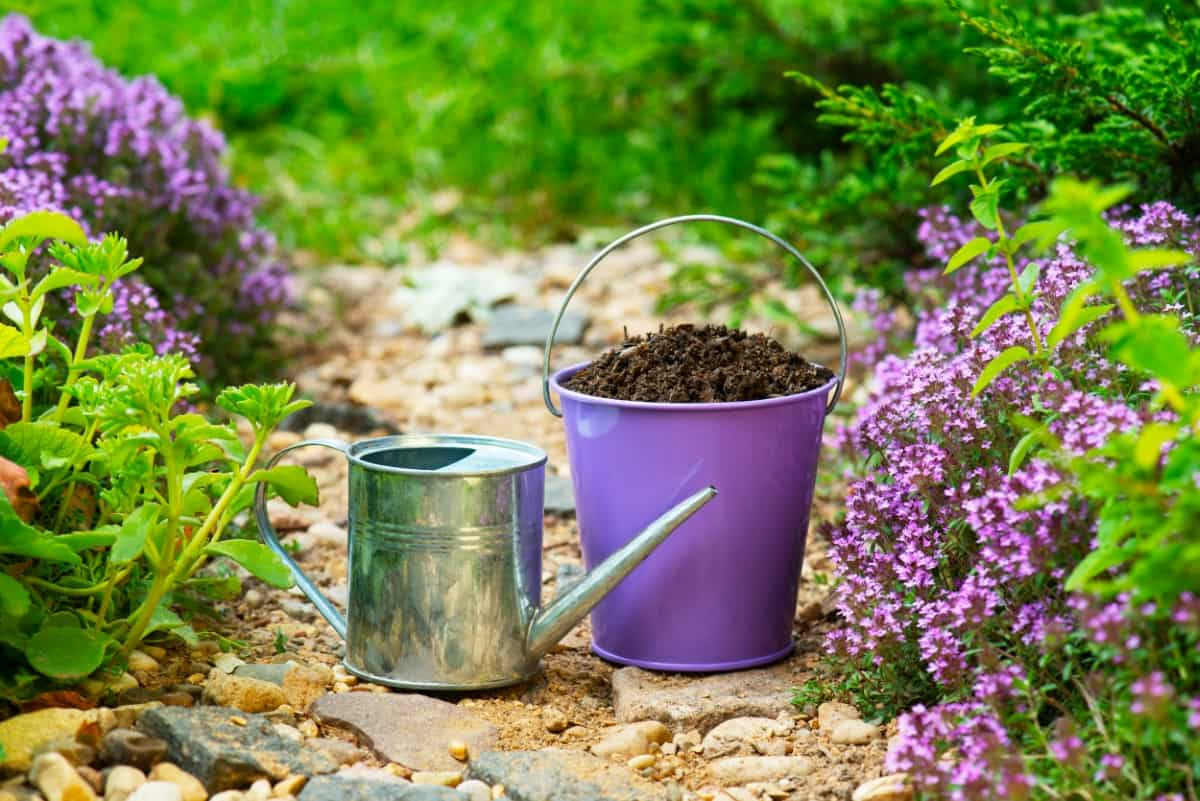With Lomi Compost, you can transform kitchen scraps into a nutrient-rich fertilizer that nourishes plants and promotes healthy growth. Lomi Compost is more than just your average composting method. It’s a game-changer for those who want to minimize waste and maximize the health of their gardens.

Benefits of Lomi Compost
What is Lomi Compost and How Does It Work?
What is Lomi compost used for? Lomi Compost is a versatile and valuable soil additive that can be used in various ways to enhance your gardening experience. Its medium-brown color and variable particle size make it an excellent choice for mixing into potting soil. Once incorporated, Lomi Compost becomes the perfect nourishing agent for houseplants or outdoor gardens.
Lomi Compost is important for adding organic matter and nutrients to the garden soil. Composting breaks down food waste, creating a nutrient-rich mixture that helps plants thrive. By adding this natural fertilizer to your gardening routine, you not only reduce waste but also improve soil structure and fertility over time.
The Benefits of Using Lomi Compost in Organic Gardening
Lomi Compost adds vital organic matter to your garden soil. This improves soil structure and enhances its ability to retain moisture, ensuring healthier plant growth. Additionally, Lomi Compost is rich in essential nutrients and beneficial microbes derived from decayed food waste.
Moreover, using Lomi Compost helps reduce landfill waste by diverting food scraps from ending up in garbage bins. Recycling these materials through composting contributes to environmental sustainability and creates a valuable resource that promotes healthy plant growth. = The compact size of the Lomi machine allows you to easily convert kitchen scraps into nutrient-rich fertilizer without relying on traditional backyard composting methods.
Step-By-Step Guide to Creating Lomi Compost at Home
Gather Your Materials – To start creating Lomi compost at home, you’ll need a few key materials. Firstly, you’ll need a Lomi composter machine. This powerful little device will work hard to break down your food waste into nutrient-rich compost. Next, gather some food scraps – anything from fruit and vegetable peels to coffee grounds and eggshells will do.
Load the Composter – Once your materials are ready, it’s time to load up the composter. Open the lid and place your food scraps inside. Don’t worry about chopping them up – the Lomi composter can handle larger pieces.
Start the Cycle – After loading up the composter with your food scraps, close the lid and press start. The Lomi machine will begin its multi-step process of mimicking traditional composting. The Lomi composting process takes around 16 to 20 hours in Grow mode. While waiting for it to complete, you can go about your day knowing that nature is doing its magic inside that little machine.
Use Your Homemade Compost – Open up your Lomi composter once the cycle is finished, and behold your homemade compost. It should be a rich dark brown color with a pleasant earthy smell. This nutrient-packed soil amendment can be added to your houseplants or outdoor garden.
Understanding the Key Ingredients for Successful Lomi Composting
Food waste – This can include fruit and vegetable scraps, meat, dairy products, and mixed plate scrapings. The more diverse your food waste inputs are, the richer and more balanced your compost will be.
Oxygen – Lomi composters utilize aeration technology to ensure oxygen reaches all parts of the compost pile. This promotes aerobic decomposition and prevents unpleasant odors from forming.
Moisture – Your compost pile should have a moisture content similar to a wrung-out sponge – not too wet or dry. Regularly check the moisture levels and add water if necessary. In addition to food waste, oxygen, and moisture, you’ll need carbon-rich materials such as dried leaves or shredded paper. These structure the compost pile and help balance out nitrogen-rich food waste. Time plays a significant role in successful Lomi composting. It takes patience for the organic matter to break down fully into nutrient-rich soil amendments.
How to Maintain and Manage a Lomi Compost Pile Effectively?
It’s important to turn the compost pile regularly. This helps to aerate it and promotes decomposition. Use a shovel to mix the materials, ensuring oxygen reaches all the pile’s parts, and monitor the moisture levels of the compost pile. It must be moist but not overly wet or dry. If it feels too dry, add water gradually until it reaches the desired consistency. On the other hand, if it’s too wet, add some dry materials like leaves or sawdust to absorb excess moisture.
In case you missed it: From pH Levels to Composting: How to Prepare the Best Soil for Your Flower Garden

Next, remember to balance out green and brown materials in your compost pile. Green materials include fresh fruit and vegetable scraps, while brown materials refer to dried leaves, shredded newspaper, or cardboard. Aim for a ratio of 3:1 (brown: green) for optimal decomposition. Additionally, avoid adding meat or dairy products to your Lomi compost, as they can attract pests and create unpleasant odors. Stick with plant-based kitchen scraps instead for best results.
Troubleshooting Common Issues in Lomi Composting
Odor: If you notice a strong odor coming from your Lomi bucket, it could be due to an imbalance of green (nitrogen-rich) and brown (carbon-rich) materials. Add more browns, such as shredded paper or dry leaves to absorb the excess moisture to fix this issue.
Pests: Fruit flies and other pests can be attracted to the food scraps in your Lomi bucket. To deter them, cover the food waste completely with carbon-rich materials and avoid placing overly ripe fruits or vegetables in the bucket.
Excessive moisture: Too much moisture can lead to a slimy or soggy pile that doesn’t break down properly. Add dry materials like shredded newspaper or cardboard to balance the moisture content.
Incomplete breakdown: If you find large chunks of food waste remaining after running a cycle, try chopping larger pieces into smaller bits before adding them to the Lomi bucket.
Comparing Lomi Composting with Other Composting Methods
Traditional outdoor composting involves creating a pile or bin where organic materials slowly break down. This method requires regular turning and monitoring of moisture levels to ensure proper decomposition. The material can take several months or even a year to transform into usable compost fully.
On the other hand, Lomi composting offers a much quicker solution. With its advanced technology, Lomi machines can turn food waste into nutrient-rich soil in 16 to 20 hours. This makes it an ideal option for those who want fast results without the hassle of traditional composting. Another advantage of Lomi composting is its versatility.
While other methods may limit what can be added to the pile, Lomi allows for a wide range of organic materials, including fruit and vegetable scraps, meat, dairy products, and more. This means you can use all your kitchen waste instead of sending it to a landfill. In addition, Lomi produces odorless compost due to its enclosed system, which prevents smells from escaping.
Other methods, like outdoor bins or piles, may attract pests and emit unpleasant odors if not managed properly. However, it’s important to note that while Lomi provides convenience and speed, it may not produce high-quality or matured compost compared to traditional methods. The accelerated process might result in less breakdown of certain materials, such as woody debris or fibrous plant matter.
How Long Does Lomi Take to Compost?
In just 16 to 20 hours, Lomi Compost can transform food waste into a nutrient-rich soil additive that will benefit your house plants or vegetable garden. With its quick and efficient composting process, Lomi is a game-changer for apartment dwellers and urban gardeners who want to make the most of their food scraps.
In case you missed it: How to Apply 14-14-14 Fertilizer: Nutrient Composition, Uses, and Benefits

Using Lomi Compost, you reduce waste and enrich your soil with organic matter, nutrients, and beneficial microbes. This natural fertilizer provides essential elements for plant growth while promoting healthy root development and improving overall soil health.
Conclusion
Lomi Compost is a medium-brown compost that comes in variable particle sizes. Unlike traditional composting methods, Lomi Compost takes it up a notch by incorporating food waste into its mix. By running through the Lomi bucket cycle, all sorts of organic matter can be transformed into nutrient-rich fertilizer. Lomi Compost also brings a host of beneficial microbes from decayed food waste. These little helpers work their magic by breaking down nutrients further and improving overall soil structure.
- Feed Your Flock for Less: Top 10 Tips to Save on Chicken Feed
- Ultimate Guide to Ossabaw Island Hog: Breeding, Raising, Diet, and Care
- Hatching Answers: The Top 10 Reasons Your Chickens Aren’t Laying Eggs
- Eggs and Economics: Breaking Down the Cost of Raising Backyard Chickens
- Defend Your Greens: Proven Methods to Keep Iguanas Out of Your Garden
- Ultimate Guide to Cinnamon Queen Chicken: A Comprehensive Guide for Beginners
- Ultimate Guide to California Tan Chicken: Breeding, Raising, Diet, Egg-Production and Care
- Ultimate Guide to Marsh Daisy Chicken: Breeding, Raising, Diet, and Care
- 10 Types of Chicken Farming Businesses You Can Start for Profits